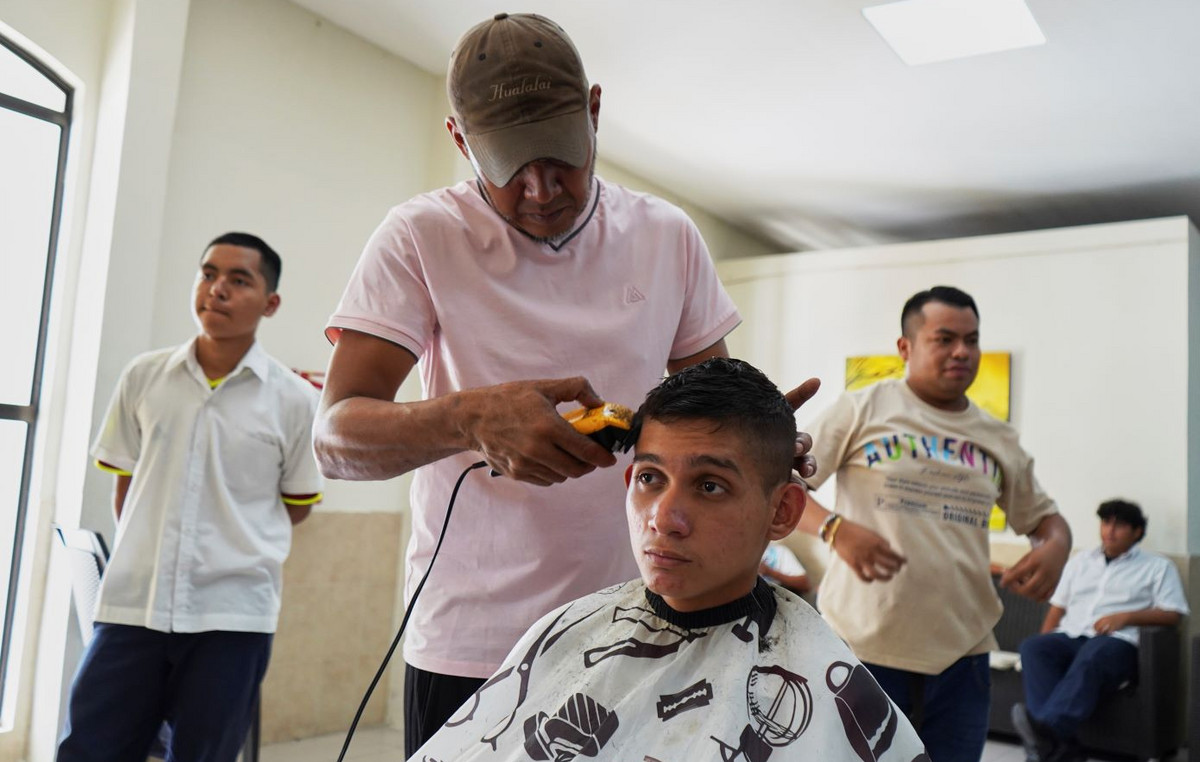Fina, International Swimming Federation, voted this Sunday (19) new eligibility rules that restrict transgender athletes from participating in elite women’s competitions.
The policy is the strictest of any Olympic sporting body and effectively prohibits any transgender woman who has gone through male puberty from competing in women’s events.
Fina also agreed to work to establish an “open” category for some events that would ensure all swimmers have a chance to compete.
The decision means that swimmers like American Lia Thomas will not be able to compete in world championships or the Olympics.
University of Pennsylvania swimmer Thomas became the first transgender National Collegiate Athletic Association (NCAA) champion in Division I history after winning the women’s 500-yard freestyle earlier this year.
The success of Thomas, who competed on the Pennsylvania men’s team for three years before transitioning and setting several program records with the women’s team, has sparked widespread debate on the issues of inclusion and competitive fairness in swimming and sport in general. .
Here is the background to Fina’s decision and why this decision matters to the world of sport.
Why did Fina make this decision?
There have been growing calls from former swimmers and coaches for the regulatory body to restrict transgender women from participating in the sport, which intensified after Thomas’ success at the US college championships.
Those who campaigned for change argued that people who have gone through male puberty have physical advantages and therefore competition from women needed to be protected.
Advocates of trans participation argue that not enough research has been done on the question of whether trans women have an advantage. Groups such as Athlete Ally have called Fina’s new policy “discriminatory, harmful, unscientific”.
Is this a ban on all transgender swimmers in competition?
The decision only applies to elite competitions organized by Fina, such as its world championships, and competitions where the federation defines eligibility criteria – primarily the Olympic Games. It also affects who is eligible to set a world record in women’s swimming.
It does not necessarily apply to national or regional competitions or lower level matches. National federations could apply their own criteria to their competitions.
The decision also only affects transgender athletes in women’s competitions. Female to male transgender athletes (transgender males) will continue to be eligible to compete in male competitions without any restriction.
Creating an ‘open category’, the details of which have yet to be worked out, would also create a space for transgender women to compete.
What evidence did Fina raise
Fina’s new policy grew out of a working group that had three components — an Athletes Group, a science and medicine group, and a legal and human rights group, which Fina says has studied “the best statistical, scientific and available medical evidence on sex differences in sport performance and any associated advantage based on male sex”.
Fina said the Science Group is comprised of “independent experts in the fields of physiology, endocrinology and human performance, including experts in sex differences in human performance and transgender medicine.”
Delegates to the Fina congress in Budapest were told by members of the group that evidence showed that going through male puberty gave trans swimmers a physical advantage that remained even after hormone treatment as part of their transition.
What is the position of other sports?
In November, the International Olympic Committee issued a ‘framework’ on the matter, leaving eligibility decisions to individual sporting bodies, but adding that “until evidence determines otherwise, athletes should not be considered to have an unfair competitive advantage.” or disproportionate due to variations in sex, physical appearance and/or transgender status.”
Last year, New Zealand powerlifter Laurel Hubbard became the first transgender athlete to compete in the Olympics in a gender category other than the one assigned at birth.
Many sporting bodies allowed transgender women to compete in women’s events if they lowered their testosterone levels to a certain extent.
Last week, the Union Cycliste Internationale (UCI) tightened its rules by increasing the transition period to lower testosterone levels from 12 months to two years and halving the maximum level to 2.5 nmol/L.
Fina’s decision could increase pressure for similar moves within other sports.
Can the decision be challenged?
The normal way to challenge the decisions of international sporting bodies is through the Court of Arbitration for Sport, based in Lausanne, Switzerland. Other sports will be watching any cool moves with keen interest.
Source: CNN Brasil
I’m Susan Karen, a professional writer and editor at World Stock Market. I specialize in Entertainment news, writing stories that keep readers informed on all the latest developments in the industry. With over five years of experience in creating engaging content and copywriting for various media outlets, I have grown to become an invaluable asset to any team.







